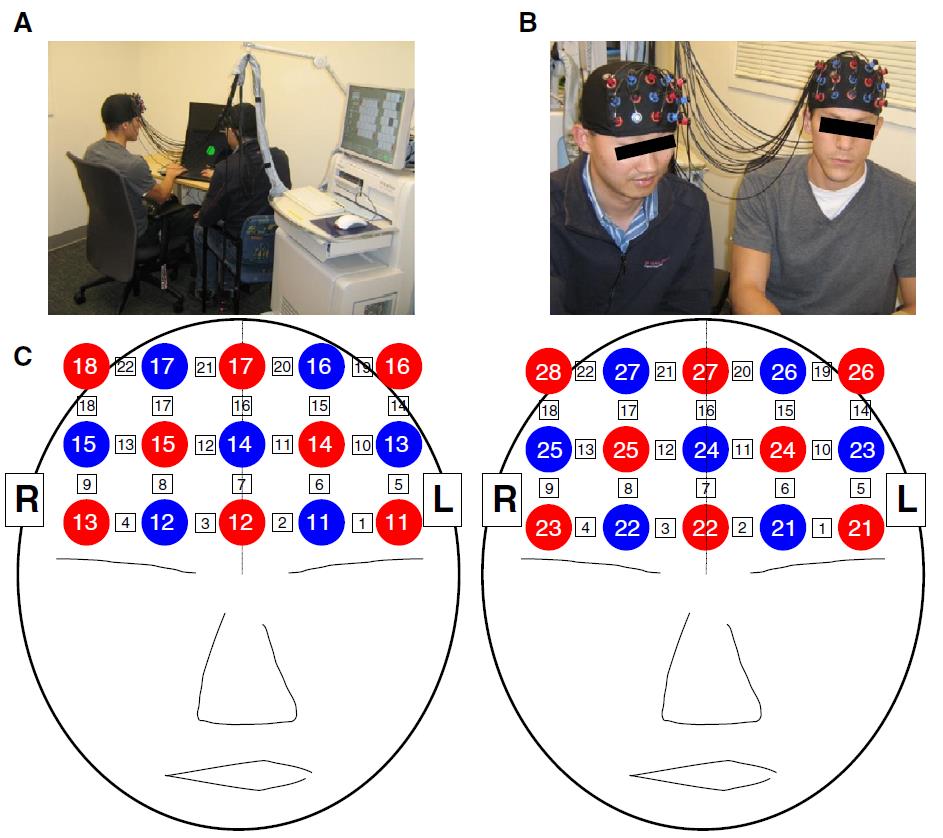NIRS hyperscanning data analysis (1)
NIRS hyperscanning data analysis (2)
NIRS hyperscanning data analysis (3)
NIRS hyperscanning data analysis (4)
Data collection
We used Hitachi’s ETG 4000 to collect data. This device normally collects data from a single head. In some of the configurations, it has a set of fibers collecting the signal from the left brain, the other set from the right brain. We thought, why don’t we use the second set to collect signal on another person?
That’s what we did. The ETG 4000 system still treated the two streams of signals from a single brain, but later when we do the data analysis, we separated them.
We used one 3×5 patch on one person’s head, and the other 3×5 patch on the 2nd person’s head. The patch covers only a small area of the brains, so we need to pick up which brain region we need to measure. We chose the frontal cortex. Frankly speaking we don’t have a solid reason to do so, except:
(1) for a high level cognitive task like collaboration, frontal cortex is probably involved;
(2) the frontal region is easier to place the NIRS patch (there is no hair! Separating hair to get a better signal drives me crazy!), and the signal-to-noise ratio is higher compared to other brain areas (the skull is thinner in this region, as demonstrated by our other publications, see figure below).

So we put the caps on the frontal lobe – mostly for easier of experiment. You can see a picture below. In the picture are Dan (researcher assistant at that time) and me.

We tried to put the cap in the same position for all subjects. Of course, everybody’s head shape is different, so it’s not possible to precisely put the cap in the same location. But we follow some standard techniques such as using the eyebrow and midline as the landmark. In the end, we find this approach works reasonably well.
For this experiment, we did not collect the 3D digitizer data (to localize the channel location more precisely). The current method of collecting 3D digitizer data is tedious and prone to errors. I wish in the future the NIRS device can automatically tell the locations of each probe.


